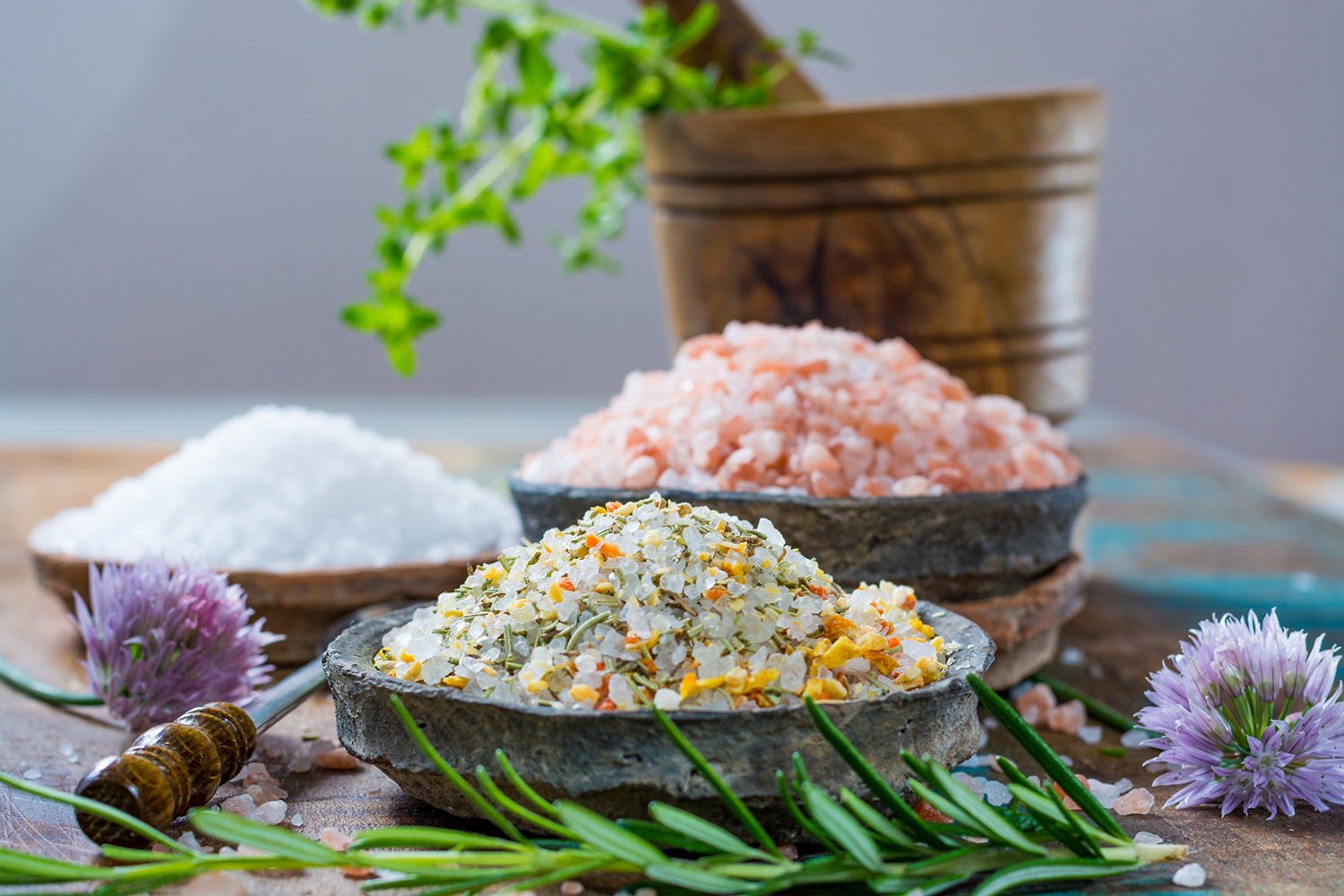Salt tends to get a bad rap, but this flavor enhancer is vital to your health.
The minerals it supplies are essential for the proper function of your nerves, muscles, brain, and more.
Rethinking Low Sodium
By weight, salt is about 40 percent sodium and 60 percent chloride. People are commonly advised to limit sodium intake to prevent high blood pressure, also called hypertension. However, this advice isn’t right for everyone.
Slightly more than half of people with hypertension are salt sensitive, meaning their blood pressure significantly increases with higher sodium intake. But only 25 percent of people with normal blood pressure are salt sensitive. This suggests that some people may be needlessly restricting salt. What’s more, skimping on salt is linked to health problems.
“Overly restricting salt increases your risk of fatigue, dizziness, and muscle cramps,” says James DiNicolantonio, PharmD, author of The Salt Fix. “A low-salt diet also may increase your insulin levels, which can lead your cells to become resistant to insulin. That puts you on the path to developing Type 2 diabetes.” This may be more likely with sodium intakes below 1,000 milligrams (mg) daily, which is less than a half teaspoon of salt. More research is needed in this area.
Health Benefits of Sodium
“Sodium is needed for nearly every chemical reaction in your body,” says David Brownstein, MD, author of Salt Your Way to Health.
“If you don’t consume enough salt, your body releases hormones to help your kidneys hold on to sodium. These hormones activate your sympathetic nervous system, which is your fight-or-flight response.”
Over-stimulating this system may cause fatigue and worsen heart disease.
Some other reasons it’s important to get enough salt include:
-
Brain Function
Sodium is essential for transmitting nerve signals, including in your brain. Low levels of sodium in your blood may contribute to poor memory and concentration.
-
Digestion
The chloride portion of salt is used to make stomach acid, which promotes good digestion and helps kill harmful bacteria in your gut.
-
Bone Health
Sodium helps your body maintain magnesium and calcium balance, which is essential for healthy bones.
-
Athletic Performance
Consuming salt, such as in an electrolyte drink, before long-distance running or other endurance exercise may improve your performance.
How Much Salt do You Need & What Type?
Many health authorities advise limiting sodium intake to 2,300 mg daily, which is about 1 teaspoon of salt. Still, the average American’s daily sodium intake is 3,400 mg (1½ teaspoons of salt). This amount may be fine for some individuals.
“Your sodium needs depend on many factors,” Dr. DiNicolantonio says. “This includes how much caffeine you consume (as it promotes sodium loss), how much you exercise and sweat, medications you take, and diseases or health conditions.” A functional medicine doctor can evaluate what’s best for you based on such variables.
It’s also important to consider where your sodium is coming from. Americans get about 70 percent of their sodium from processed foods and restaurant foods, but these are typically made with refined salt.
“Refined salt has all of its trace minerals removed and contains unhealthy additives,” Dr. Brownstein says. “The best types of salt are unrefined, which means they contain their full complement of trace minerals.” See “Smart Salt” for recommended unrefined salts.
Not only could unrefined, natural salt help your body function better, it undoubtedly will make your food taste better.
Smart Salt Choices
Each of these unrefined salts contain small amounts of at least 60 minerals, including calcium, magnesium, and chromium.
-
Celtic Sea Salt
Harvested from coastal regions of Europe, Hawaii, and Guatemala. Lab tested for purity. www.CelticSeaSalt.com
-
Redmond Real Salt
Mined from an ancient sea bed in Redmond, Utah. Provides 18 percent of the daily value for iodine per 1/4 teaspoon. www.RealSalt.com
-
Himalayan Pink Salt
Comes from salt mines below the Himalayan Mountains in Pakistan. Several brands are available.





